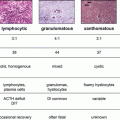The diagnosis of postoperative hypoparathyroidism can be confirmed by the finding of low-ionized calcium level and normal serum level of magnesium. Serum phosphorus levels are usually high or at the upper normal range. In a few patients with severe primary hyperparathyroidism, postoperative hypocalcemia may persist despite standard treatment, because of the uptake of calcium into the remineralizing bone (“hungry bone syndrome”). In this condition, hypocalcemia is with low phosphorus and appropriately elevated PTH levels.
The goal of therapy is to relieve symptoms of hypocalcemia and maintain serum calcium in the low–normal range and serum phosphorus in the high–normal range. The standard treatment includes oral calcium and vitamin D metabolites and analogs. Calcitriol [1,25(OH)2D3] is preferred (over vitamin D2 or D3 ) because of its potency and rapid onset and offset of action. The analogue alfacalcidol (1-αOHD3), which is converted to calcitriol, may also be used [1] (Table 27.1).
Table 27.1
Orally active vitamin D analogs commonly used in the management of chronic hypoparathyroidism
1,25(OH)2D3, calcitriol | 1αOHD3, alfacalcidiol | DHT, dihydrotachysterol | |
|---|---|---|---|
Dose | 0.5–2.0 μg once or twice daily | 0.5–3.0 μg once daily | 0.2–1.0 mg once daily |
Time to onset of action | 1–2 days | 1–2 days | 4–7 days |
Time of offset of action | 2–3 days | 5–7 days | 7–21 days |
Pharmaceutical formulation | Capsules | Capsules/drops | Drops |
The potential side effects of overtreatment are hypercalcemia, hyperphosphatemia, and hypercalciuria; the latter can determine nephrocalcinosis and nephrolithiasis [5]. Hypercalciuria may develop before serum calcium increases, because of the lack of PTH-mediated calcium reabsorption in the renal distal tubule. A low-salt diet and eventually a thiazide diuretic may be helpful to reduce hypercalciuria and maintain normocalcemia.
In our patient, a low-salt diet (100 mEq of sodium per day) together with hydrochlorothiazide 25 mg daily restored normocalcemia (albumin-corrected total serum calcium 8.8 mg/dl) and reduced urinary calcium excretion (250 mg/24 h).
Lessons Learned
The total serum calcium level should be corrected for serum albumin.
The diagnosis of postoperative hypoparathyroidism is based upon the finding of hypocalcemia and undetectable or inappropriately low/normal intact PTH level
The goal of therapy is to relieve symptoms of hypocalcemia and maintain serum calcium in the low–normal range and serum phosphorus in the high–normal range.
Stay updated, free articles. Join our Telegram channel

Full access? Get Clinical Tree




